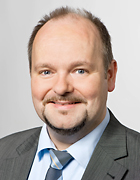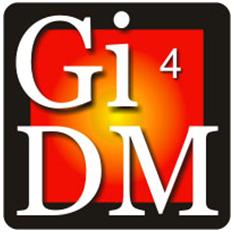| Invited speakers | |
| Ed Parsons | |
 |
|
| Here come the Machines. Bringing the power of machine learning to crisis response:the talk will look at how the processing capability of the cloud and big data can be harnessed to build practical applications that may be used to support crisis response. | |
| Ed Parsons is the Geospatial Technologist of Google, with responsibility for evangelising Google’s mission to organise the world’s information using geography. In this role he maintains links with Universities, Research and Standards Organisations which are involved in the development of Geospatial Technology. He is currently co-chair of the W3C/OGC Spatial Data on the Web Working Group. Ed was the first Chief Technology Officer in the 200-year-old history of Ordnance Survey, and was instrumental in moving the focus of the organisation from mapping to Geographical Information. He came to the Ordnance Survey from Autodesk, where he was EMEA Applications Manager for the Geographical Information Systems (GIS) Division. He earned a Masters degree in Applied Remote Sensing from Cranfield Institute of Technology and holds a Honorary Doctorate in Science from Kingston University, London and is a fellow of the Royal Geographical Society. more … | |
| Thomas Kolbe | |
 |
|
| On the way to CityGML 3.0: 3D City Models for Multi Simulations and the Structuring of Big Urban Data: The presentation will show new directions in the semantic 3D modeling of cities and landscapes. It will show concrete examples where city models have been recently introduced to link distributed and heterogeneous big data from various application areas like energy, environment, transport, and disaster management coming from different city departments. I will also show how these challenges are being addressed in the upcoming new version 3.0 of the CityGML standard. | |
| The research field of Professor Kolbe (b. 1968) is the development of methods for the spatial, temporal and semantic modeling, storage, analysis and visualization of the environment. Key areas are virtual 3D city and landscape models, city system modeling, smart cities, 3D geodatabases, 3D geoinformation systems, GIS & simulations and indoor navigation. Professor Kolbe is the initiator and co-author of the international standard CityGML for semantic 3D city and landscape models. Professor Kolbe studied computer science at the University Dortmund between 1988 and 1993. After completing his studies he worked as a research assistant at the Institute for Computer Science III at the University of Bonn and the Institute for Environmental Sciences at the University of Vechta until 1999. He was awarded his doctoral degree in 1999. From 1999 he was a research assistant, and later a senior research assistant, at the Institute for Cartography and Geoinformation at the University of Bonn. Between 2006 and 2012 he held the Chair of the Department of Geoinformation Technology at TU Berlin. Since 2012 he has been president of the German Society for Photogrammetry, Remote Sensing and Geoinformation (DGPF) and a professor at TUM. | |
| Thursday 1 October | |
| Time | Activity |
| 08:00 | Registration |
| 09:00 | Plenary Talk: Simon Lacroix |
| 09:45 | Opening |
| 10:00 | Invited Speaker: Devis Tuia |
| 10:45 | Coffee Break |
| 11:15 | Inivited Speaker: Ed Parsons Here come the Machines. Bringing the power of machine learning to crisis response |
| 12:00 | Panel Discussion |
| To be elaborated | |
| 12:45 | Lunch |
| 14:00 | Session A: Crisis Management |
| C. Corbane, T. De Groeve, D. Ehrlich, K. Poljansek A European framework for recording and sharing disaster damage and loss data |
|
| R. Roller, J. Roes, E. Verbree Benefits of linked data for interoperability during crisis management |
|
| G. Lucas, Cs. Lénárt, J. Solymosi Development and testing of geo-processing models for the automatic generation of remediation plan and navigation data to use in industrial disaster remediation |
|
| 15:30 | Coffee Break |
| 16:00 | Session B: Monitoring 1 |
| M. Nakagawa, T. Yamamoto, S. Tanaka Location-based infrastructure inspection for SABO facilities |
|
| T. Fernández, J. L. Pérez, F. J. Cardenal, A. López, J. M. Gómez, C. Colomo, J. Delgado, M. Sánchez Use of a light UAV and photogrammetric techniques to study the evolution of a landslide in Jaén (Southern Spain) |
|
| G. Lucas Considering time in orthophotography production: from a general workflow to a shortened workflow for a faster disaster response |
|
| 19:30 | Dinner (La Manade Boch) |
| Friday 2 October | |
| Time | Activity |
| 08:00 | Registration |
| 09:00 | Plenary Talk: Elmar Eiseman |
| 09:45 | Opening |
| 10:00 | Invited Speaker: Thomas Kolbe On the way to CityGML 3.0: 3D City Models for Multi Simulations and the Structuring of Big Urban Data |
| 10:45 | Coffee Break |
| 11:15 | Session C: Risk Management |
| R. Aarsen, M. Janssen, M. Ramkisoen, F. Biljecki, W. Quak, E. Verbree Installed base registration of decentralised solar panels with applications in crisis management |
|
| H. Sheikhian, M.R. Delavar and A. Stein Integrated estimation of seismic physical vulnerability of Tehran using rule based granular computing |
|
| M. Caprioli, R.Trizzino, R. Pagliarulo, M. Scarano, F. Mazzone, A. Scognamiglio Management of environmental risks in coastal areas |
|
| 12:45 | Lunch |
| 14:00 | Session D: Coordination of Disaster Response |
| QIU Linyao, ZHU Qing, GU Jieye, DU Zhiqiang A task-driven disaster data link approach |
|
| E. Demir Ozbek, S. Ates, A.C. Aydinoglu Using geo-data corporately on the response phase of emergency management |
|
| T. Bandrova, M. Koutev, L. Pashova, D. Savova, S. Marinova Conceptual framework for educational disaster centre “Save the Children Life” |
|
| 15:30 | Coffee Break |
| 16:00 | Session E: Monitoring 2 |
| Kuldeep, P. K. Garg The role of satellite derived data for flood inundation mapping using GIS |
|
| L. A. Gueye, M. S. Keita, , J. O. Akinyede, O. Kufoniyi, G. Erin Development of a cartographic strategy and geospatial services for disaster early warning and mitigation in the ECOWAS sub region |
|
| 17:30 | Closing |

